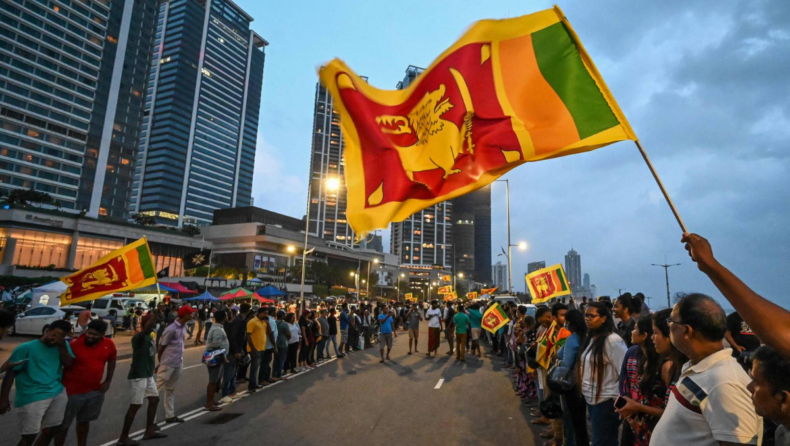Sri Lanka must first get debt relief from its three main international lenders China, India, and Japan to secure an IMF loan.
Lazard, a financial advisory group, hired by the Sri Lankan government has begun discussions with China, India, and Japan over restructuring Sri Lanka’s debt as it looks to the International Monetary Fund (IMF) for assistance.
In order to help the government through the process of restructuring its debt, for which estimates range from $85 billion to well over $100 billion, Sri Lanka has hired Lazard as well as international lawyers Clifford Chance.
To secure a loan of about $2.9 billion from IMF, Sri Lanka has to get debt relief from China, India, and Japan, first, as they hold about $13 billion of Sri Lanka’s debt.
This pre-condition was set forth by IMF in a preliminary agreement with Sri Lanka, earlier this month.
Acting cabinet spokesperson Ramesh Pathirana said that Lazard is in the process of reaching out to India, China, and Japan, primarily to guarantee some form of understanding.
Talks on debt restructuring with representatives of China, India, Japan, and the US are speculated to start next week, another source said.
China has also been encouraged to support Sri Lanka’s debt restructuring by a US envoy. China is Sri Lanka’s largest bilateral creditor, with $ 35.1 billion in government-to-government debt.
While agreeing to take part in debt restructuring, Samantha Power, the director of the United States Agency for International Development (USAID), also gave the island nation advice on how to handle future borrowing.
Sri Lanka is experiencing its worst financial crisis in decades, with inadequate foreign exchange reserves to cover essential imports of fuel, food, and medication.
Sri Lankan Economic Crisis
In May, for the first time in its post-independence history, Sri Lanka missed an interest payment on its foreign debt.
In light of this failure, its reputation with investors was harmed, making it more difficult for it to obtain the necessary financing on global markets.
Long lines extending hundreds of meters outside the petrol stations became a familiar sight, as many people waited in line for hours, sometimes days, to purchase the rare fuel and cooking gas.

The economic crisis led people to the streets to protest against the skyrocketing inflation and the abysmal state of economic conditions, soon the demand for the resignation of President Gotabaya Rajapaksa emerged.
It reached its pinnacle when President Gotabaya Rajapaksa fled the country, leaving the next government to deal with the crisis.

Who is to blame for Sri Lankan economic crisis?
The Covid pandemic, which severely hurt Sri Lanka’s tourist industry, one of its main sources of foreign exchange, was to blame, according to the Rajapaksa government.
The environment of fear created among the tourists after a series of fatal bombings in 2019, compounded by the pandemic severally affected the tourism industry.
Many experts, however, blame the bad economic mismanagement by President Rajapaksa for the economic crisis.
Additionally, Rajapaksa has come under fire for large tax cuts he enacted in 2019 that cost the nation more than $1.4 billion annually.
In April 2021, the president introduced the policy of organic farming and banned imports of chemical fertilizers to relieve pressure on the foreign reserve.
However, this move proved disastrous as several staple rice crops were destroyed and the overall yield in agriculture was lowered. The prices for staple food were driven higher and inflation increased uncontrollably.
This policy was abandoned in March of 2022 as the economic crisis worsened.
The focus of the government over the decades to import goods instead of boosting its foreign trade meant that its earnings from export were less than its spending on imports putting pressure on the already fragile foreign reserve.
A culmination of all these factors, mainly the mismanagement of the economy by Rajapaksa led to not only his downfall but also brought in the worst economic and humanitarian crisis Sri Lanka has seen over the decades.
Sri Lanka to deal with the crisis has to secure an IMF loan along with debt relief from China, India, and Japan.
Currently, Sri Lanka owes around $859.3 million to India which comprises 2% of its total debt. India has extended help to Sri Lanka through various mechanisms.
India has signed an agreement to supply petroleum products through a credit line to Sri Lanka. It also extended credit facilities for fuel and food to around $ 2.5 billion, earlier this year.
Sri Lanka’s ability to positively handle the crisis that it faces today hangs on its ability to negotiate a favorable debt relief package and the $2.9 billion IMF loan.













